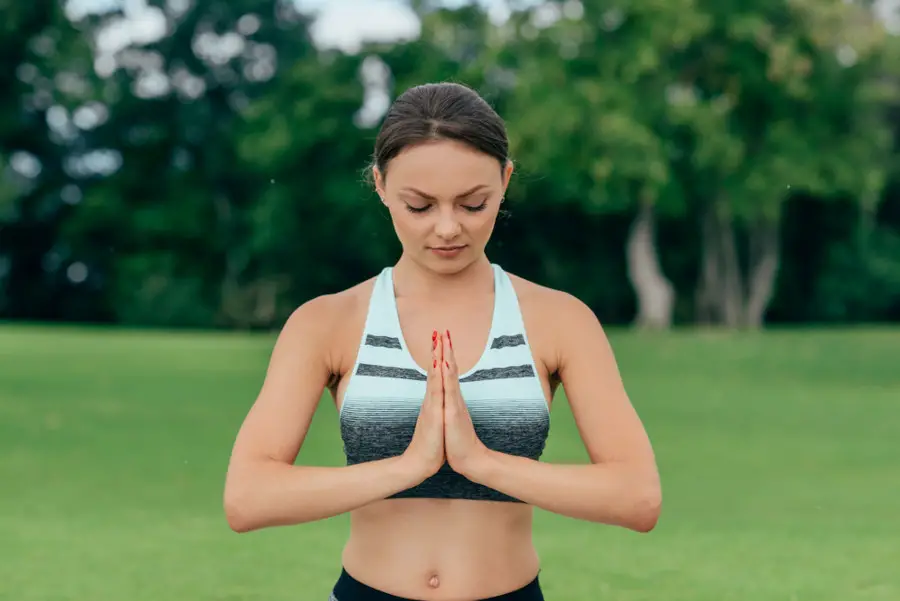Meditation can be defined as the habitual training of the mind to focus and stay in the present. All of us are susceptible to the wandering mind, which brings thoughts, memories, and feelings that are not relevant to our present situation. This leads to a loss of self-awareness, an inability to focus, and an increase in stress levels.
Meditation is the only way you can tame your mind and redirect your thoughts at will. Far from being a cure-all, it is a process that requires a lot of training to master, but one whose benefits have been proven by science.
People turn to meditation when cultivating beneficial habits like self-discipline, pain tolerance, positivity, and even better sleep patterns.
Breathing meditation is by far the most commonly practiced form of art since all that’s needed to perform this type of meditation is a quiet room. This meditation form requires one to focus on their breath as a way of clearing their mind in order to increase their awareness.
Breathing meditation benefits the body in a number of ways. Some of its notable scientifically proven benefits include:
- Stress relief – the majority of people who turn to meditation do so as a means of reducing stress. Stress is caused by a hormone known as cortisol. Cortisol, the stress hormone, brings about effects like a lack of sleep, a hike in blood pressure, depression, and anxiety. There is scientific evidence that meditation counters the inflammatory response caused by the stress hormone.
- Increased self-awareness – many forms of meditation guide you towards understanding yourself better. These meditative styles help you discover self-defeating habits, allowing you to eradicate them while building more constructive patterns.
- Increased attention span – meditation can be used to strengthen your attention span. Much like weightlifting conditions the muscles, focused-attention meditation lends more strength and endurance to your attention span.
- Prevents memory loss as we age – some say that losing our memory is inevitable as we age, but regular meditation can prevent this by helping us increase mental and memory clarity. Diseases like dementia can, therefore, be prevented by meditating regularly. (Further reading: 4 Documented Meditation Benefits for the Brain You have to know)
- Breaking addictions – increased self-awareness and willpower are the ingredients necessary for breaking addictions. Meditation is a powerful tool for breaking dependencies. It can help you control everything from food cravings to alcoholism to drug addictions.
- Better sleep – meditation not only makes it easier to fall asleep; it also results in longer, more restful nights as the mind is able to focus on rest and restoration. Meditation helps by relaxing tension in both the body and the mind, and this peaceful state is what promotes deep sleep.
Related reading: Guide to Different Types of Meditation Practices – Opens in new tab

On paper, breathing meditation is a simple exercise that only requires you to focus on your breath. In truth, most people have a hard time keeping their minds from wandering. Fortunately, there are ways you can train your mind to focus on breathing and breathing alone to make your meditation more impactful.
These six easy steps are enough to set you on your way to powerful breathing meditation sessions.
1. Breathe as Comfortably as Possible
At first, you may find your breathing oddly uncomfortable as you chase every inhale and exhale. This is normal and can be corrected easily. Relax, allow your body to breathe in and out like it has been doing ever since you were born.
Don’t push your exhales out, and don’t inhale too much air. Simply allow it to flow in and out. Make sure your breathing feels natural; comfortable even. There is absolutely no rush, so don’t focus on why you’re breathing too slowly, but do not rush anything either.
Find a comfortable way of breathing and stick with it. Once your breath is coming in and going out naturally without any pressure, you will be in a better position to relax your body and your mind.
2. Inhale, Exhale, and Track Every Single Breath
Stay with each, and every inhale and exhale. Your mind should be wholly dedicated to keeping up with your inhales and exhales without interfering with your breathing. Focusing on your breath allows you to clear everything else from your mind.
If you do find your mind wandering as it is won’t to do, do not judge yourself. Simply re-focus on your breathing, making sure that you’re keeping your breaths natural and easy.
Don’t worry if this happens a lot. Mindfulness is, after all, a habit that must be cultivated through repetitive action and persistence. Don’t feel bad if your mind keeps drifting. This tells you that you have a good reason to be practicing meditation.
3. Listen to Your Body’s Reaction as You Take and Expel Each Breath
Allow your mind to be aware of the rest of your body as you breathe in and out. Note the sensations that follow each breath in different parts of the body. Feel your stomach bulge as the diaphragm pushes down, observe how your shoulders rise with each breath and explore the sensation of heat and coolness in your nostrils as you breather in and out.
Expanding your awareness requires you to remain in the present, and monitoring your body for even the most subtle changes while you breathe is a great way to cultivate that habit.

4. Find a Spot on Your Body to Focus on
If you’re finding it hard to be aware of your entire body all at once, find a spot on your body and focus on it instead. It could be your forehead, the tip of your nose, the middle of your head, or any other body part you find easy to focus on.
This is now your center. Your awareness should start from this spot and spill over to the rest of your body. If it’s the tip of your nose, all your focus should be concentrated here. This is the starting point of the waves of awareness and mindful energy that course through your body during meditation.
Keep this in mind as you settle down and relax. This focal point is the first place your mind will focus on as you start meditating. Your awareness will gradually shift from body part to body part as you meditate, but if you are distracted halfway, return to your focal point.
The point of this is to train your mind to focus on whatever you will it to.
Do you want to learn more about Meditation? Check out our recommendations at “Meditation Bookshelf” and many free resources at our “Free MeditationLibrary“ – Opens in new tab
5. Allow Awareness to Spread from One Focal Point to Your Entire Body
Let your awareness slowly drift from your focal point and to your other body parts with each breath. Feel the sensations brought on by breathing as you slowly focus on one body part after the other. Feel the air coursing through your body, filling you up from head to toe, then feel it as it slowly exits your body as you breathe it out into the atmosphere.
Give your mind some time to focus on each body part. With every exhale, try and feel your body’s most subtle responses from your head, all the way down to your toes. Let the breath fill not only your lungs but your entire body as you slowly explore each part, noting any changes in sensation or movements.
This is an exercise that allows the mind to cultivate awareness of the body that carries it. You can choose to switch your focus to a different body part after every third exhale or take as much time as you need to give attention to your whole body.
6. Fill Your Breath with Good Energy and Let it Flow Through Your Body
Your breath is no longer just air. It is positive energy that is flowing through every pore of your skin and every crevice in your body. As you breathe in, feel this energy as it slowly fills you up, starting from your focal point and then to the rest of your body.
Each breath brings in a new wave of awareness and good energy that gently flows into all your body parts, taking away bad feelings and tensions, and bringing in a wave of positivity and good vibes.
Feel this energized breath as it travels into your nostrils, down your throat, into your arms, into your fingertips, down your torso, and all the way to your smallest toe. Allow it to occupy your entire body and expel every other feeling apart from the feeling of fresh air coursing through you.

Minimize Distractions
Meditation and distractions don’t blend. Make it easy for you to focus by limiting distractions in the following ways:
- Meditate in a quiet room, preferably alone since other people tend to become distracting after a while.
- Turn off your cellphone (or put it away) and clear away anything that might ring and break your focus.
- Don’t play any music unless you’ve mastered the art of breathing meditation. All your focus is required for this to work.
- Find a comfortable position to meditate, but don’t lie down or get too comfortable because it’s easy to doze off.
With these six easy steps, you can learn how to focus on your breath during meditation and gradually build mental awareness, attention endurance, and overall focus as you practice daily. Meditation is not a means to an end, but rather a wholesome habit that can drastically change the way you see the world and improve the quality of your life.
Stay in Touch
 Join our newsletter by using the forms on this website or click here!
Join our newsletter by using the forms on this website or click here! Follow us on Google News
Follow us on Google News Follow us on Facebook
Follow us on Facebook
Featured image from Depositphotos
Do you want to learn more about Meditation? Check out our recommendations at “Meditation Bookshelf” and many free resources at our “Free MeditationLibrary“ – Opens in new tab






